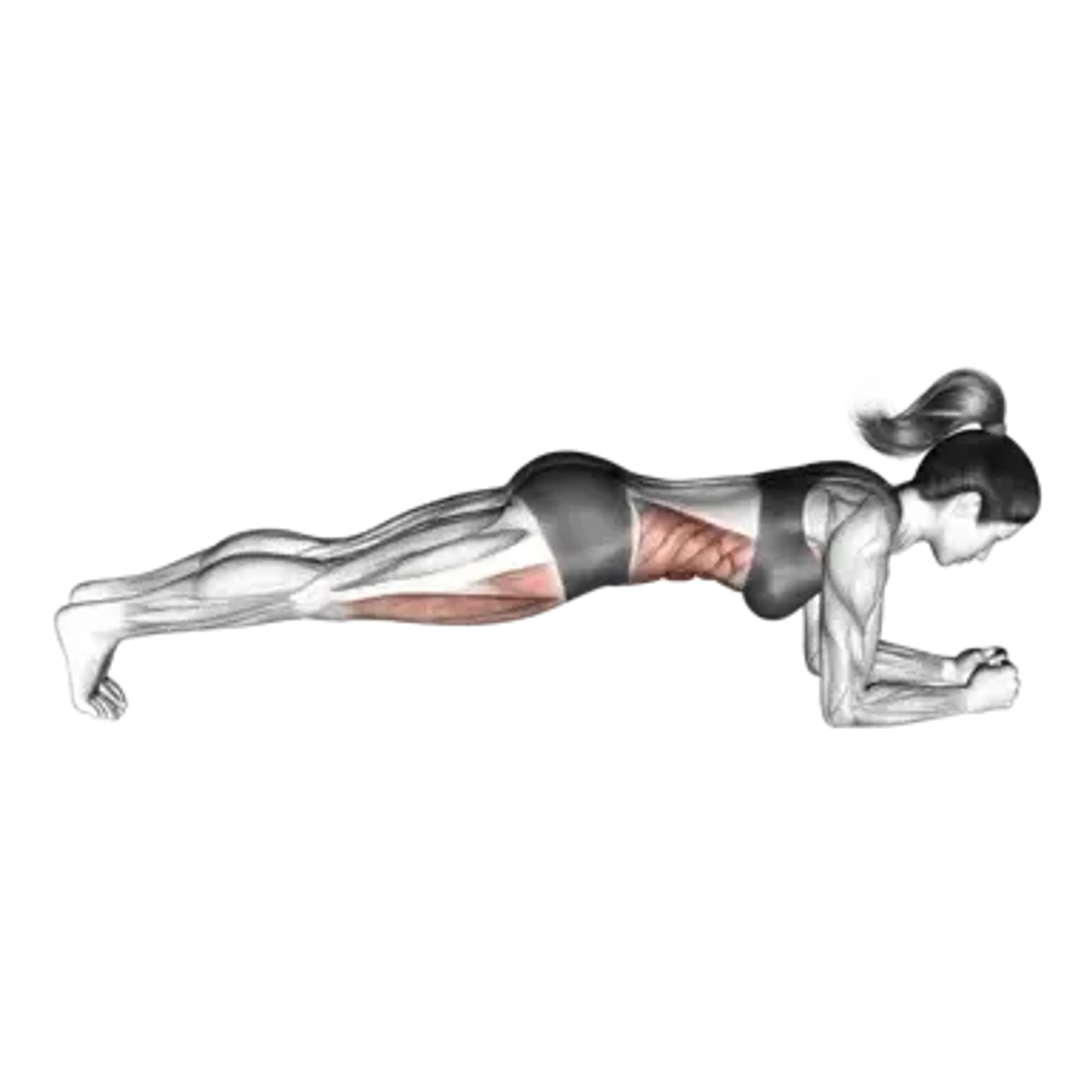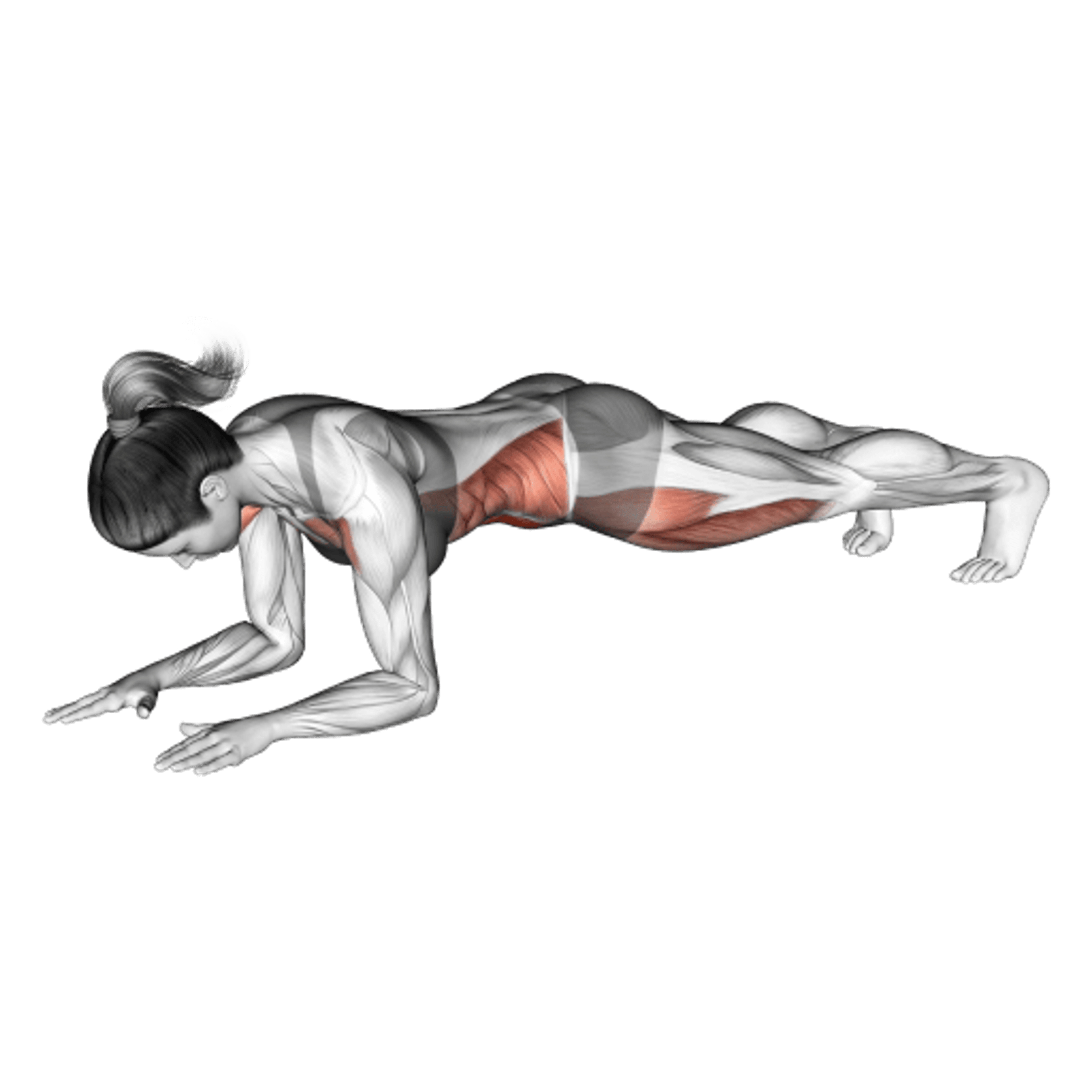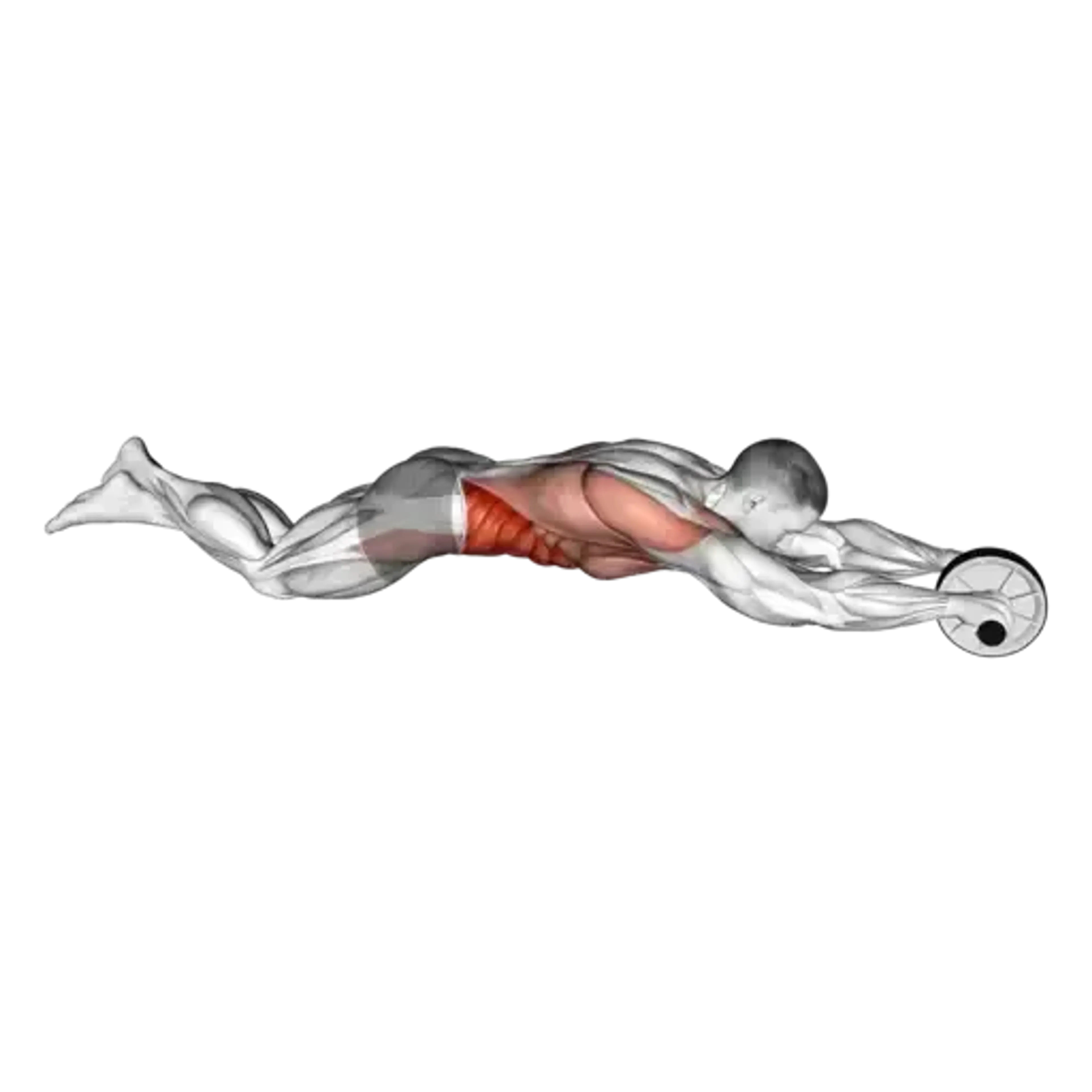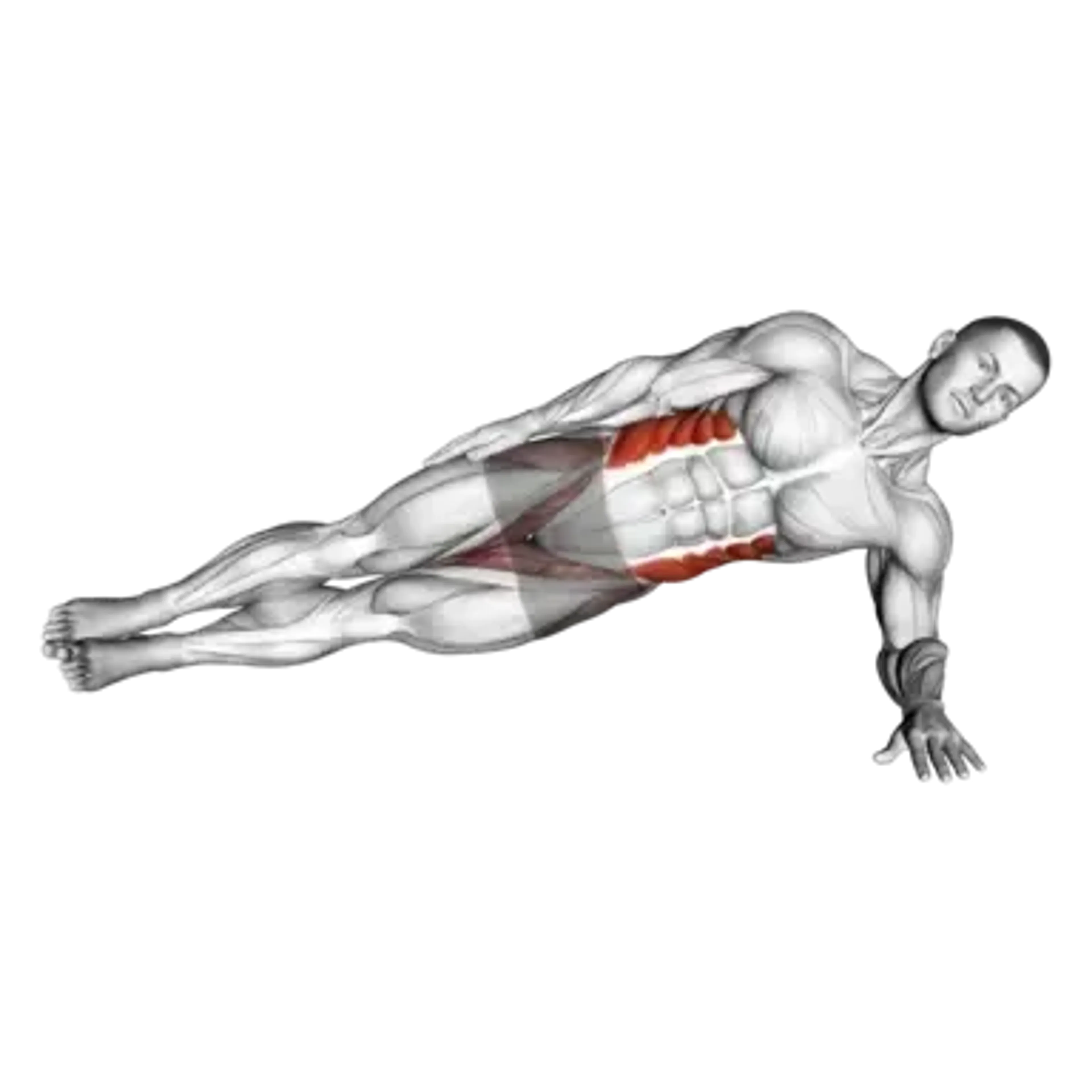Weighted Plank

Overview
- Primary Focus:
- Core.
- Equipment:
- Body weight and weight plate.
- Difficulty:
- Intermediate.
General Information
Weighted Plank is a compound exercise that primarily targets the core and also engages the back, shoulders, and glutes. It is an intermediate-level movement that adds external load to a standard plank to increase bracing demand.
It is effective for anti-extension strength, trunk endurance, and maintaining rib-to-pelvis alignment under load. Small weight increments go a long way, and clean breathing mechanics are essential to avoid compensations.
Use a flat plate or light dumbbell placed over the mid-to-upper back. Choose it when time-based planks are no longer challenging or when you want dense core work without long holds.
Muscles Worked
- Rectus Abdominis
- Primary
- Erector Spinae
- High
- External Oblique
- High
- Gluteus Maximus
- Medium
- Rectus Abdominis (Lower)
- Medium
- Deltoid
- Low
Instructions
- Set up in a forearm plank with elbows under shoulders, feet hip-width, and a light posterior pelvic tilt.
- Have a partner place a weight plate across your upper back between the shoulder blades without pressing on the neck.
- Brace the abdomen 360° and maintain steady breathing through the hold; do not hold your breath throughout the set.
- Keep ribs down, glutes lightly squeezed, and avoid letting the low back arch or hips sag.
- Hold for the prescribed duration or strong breaths; end the set before the spine position deteriorates.
- Have the partner remove the plate safely before lowering your knees or stepping out.
Common Mistakes
Injuries
Weighted Plank is a medium risk exercise when performed with proper technique.
Lumbar overextension and neck pressure are the main concerns. Place the plate away from the neck, keep a slight posterior tilt, and end the set when alignment degrades.
If breath holding or shaking occurs, reduce load or time and rebuild control. Progress gradually; regress to bodyweight planks or elevate the forearms if any sharp pain appears.
Alternative Exercises
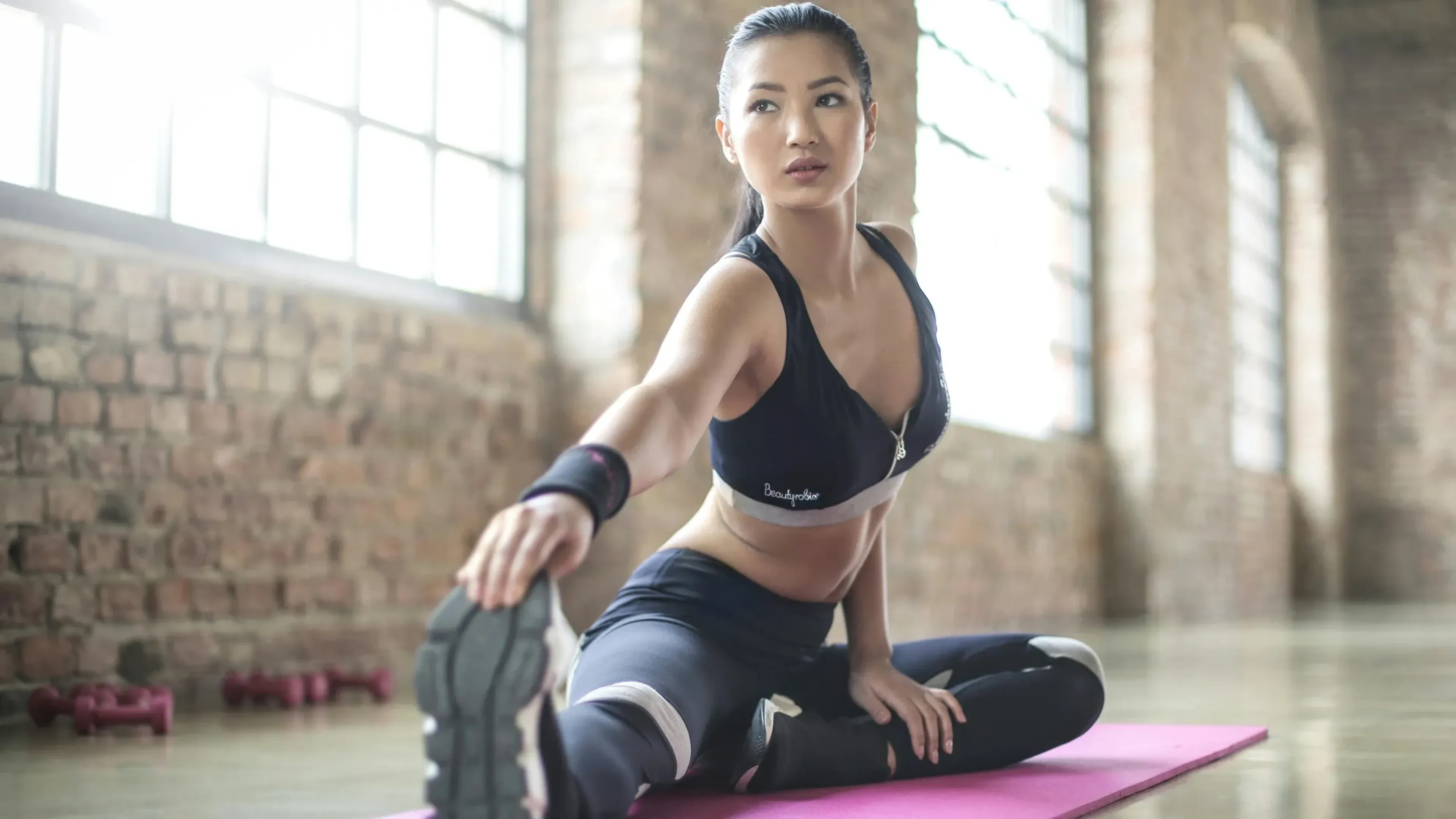
Frequently Asked Questions
- Q: How much weight should I start with?
Start with a very light plate that allows you to hold a strong position for the target time. Add small increments only when alignment is consistent.
- Q: Where exactly should the plate go?
Across the upper back between the shoulder blades. Avoid the neck and keep the load centered over the torso.
- Q: Is time or reps better for tracking?
Most lifters track by time. Choose a consistent method and progress by adding duration, load, or stricter tempo as form allows.
- Q: Can I do it without a partner?
Use a weighted vest or carefully slide a small plate into position before setting your forearms. Safety is easier with a partner.
Overview
- Primary Focus:
- Core.
- Equipment:
- Body weight and weight plate.
- Difficulty:
- Intermediate.
